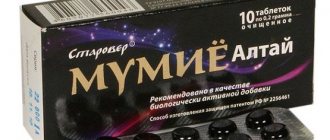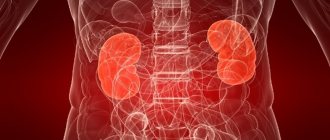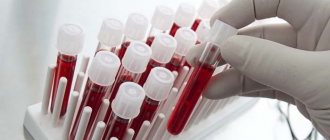Post-radiation cystitis is one of the side effects of ionizing radiation to the genitourinary organs. The disease develops as a result of a violation of treatment tactics or hypersensitivity of the urinary tract tissues to the effects of radiation radiation.
Cystitis after radiation therapy has similar symptoms to the pathology that appears after chemotherapy. The true nature of the disease can be distinguished by taking an anamnesis and cystoscopy - examination of the inner surface of the bladder through the urethra.
Features of radiation cystitis
Radiation cystitis is an inflammation of the bladder caused by radiation therapy. In most cases, this disease causes deep damage to the bladder tissue. This complicates treatment. In the treatment of radiation cystitis, antibacterial drugs, intracavitary instillations, and antispasmodics are widely used. In severe cases, surgery is performed.
Treatment
Before prescribing treatment for radiation cystitis, it is necessary to undergo a thorough diagnosis. Typically, the basis of treatment is anti-inflammatory therapy, stimulation of regenerative processes, and drugs to improve general immunity.
Due to the complexity of the disease and serious pathological changes in the bladder, conservative methods of treating radiation cystitis do not always bring the desired effect.
Anti-inflammatory therapy for this disease
For inflammatory processes in the bladder caused by bacterial activity and associated infection, anti-inflammatory and antibacterial drugs are prescribed, for example, Amoxiclav (amoxicillin + clavulanic acid), Metronidazole.
At the initial stage of treatment, injections are most often prescribed. After a course of injections, you may need to take additional medications in the form of tablets.
To more effectively and quickly suppress pathogenic microorganisms, bladder instillations are performed. Instillation refers to the drip administration of medications through the urethra. The doctor selects medications individually.
In addition to antibacterial drugs, medications that stimulate reparative (restorative) processes in the bladder can be prescribed.
For acute pain, painkillers (Ketorol, Baralgin) and antispasmodics (No-shpa, Papaverine) are prescribed.
Immunostimulating therapy
To increase general immunity and maintain the body’s protective functions, complex treatment is prescribed, which includes: regenerating agents; drugs to stimulate the hematopoietic system; medications to improve liver function (“Essentiale”); vitamin complexes and, if necessary, antihistamines.
To reduce bladder overactivity (involuntary urination), drugs are prescribed that help reduce the contractile activity of the organ and increase its functional capacity, for example, Detrusitol, Vesicare. Medicines are prescribed only by the attending physician.
Also, do not forget about a balanced diet, excluding foods with an irritating effect on the mucous membrane.
Phytotherapy
As an additional treatment, it is possible to use herbal remedies that have antimicrobial, diuretic and antiseptic effects. Urological preparations, a decoction of bearberry leaves, an infusion of birch buds, and lingonberry decoction are suitable.
Herbal preparations such as Cyston, Canephron N, Urolesan are used as an addition to the main treatment. They have anti-inflammatory and antispasmodic effects.
Laser therapy
Laser therapy has a positive effect on microcirculation of the bladder. Under the influence of laser radiation, regenerative processes are stimulated, blood supply to the tissues of the diseased organ is improved, and it has a bacteriostatic effect.
Typically, this procedure is not recommended for people with cancer, but taking into account the patient’s condition and concomitant diseases, the doctor may prescribe low-intensity therapeutic laser therapy.
Oxygenation or oxygen treatment
In severe cases, hyperbaric oxygen therapy (HBO) is used to treat radiation cystitis. The HBOT procedure involves inhaling 100% oxygen under pressure. This method improves cellular nutrition, has a healing effect and enhances the body's immune system. The procedure is carried out using a pressure chamber.
This method has some contraindications, such as claustrophobia or epilepsy, but is generally effective and safe.
Structure of the bladder
The bladder is an organ that is responsible for the function of storing and excreting urine. Its capacity on average is 250–500 ml.
The organ is located in the small pelvis. It is separated from the pubic symphysis by a layer of loose retina. Its posterior wall in men is adjacent to the rectum, seminal vesicles and ampoules of the vas deferens. The bottom is adjacent to the prostate. In women, the posterior wall of the organ is located next to the wall of the cervix. The bottom is in contact with the urogenital diaphragm. The lateral walls of the organ in all people are on the border with the muscle that raises the anus.
The walls of the bladder have mucous membrane, submucosal layer, muscles and adventitia. Due to its structure, the bladder is susceptible to various infections entering it, which can cause inflammation.
The appearance of the inflammatory process is provoked not only by infection, but also by other factors: mechanical damage, ionizing radiation. Under the influence of the latter, radiation cystitis occurs. It occurs in almost all patients who undergo radiation therapy for cancer.
Diagnostics
Completion of treatment using ionizing radiation with a delayed appearance of typical complaints is the main criterion on the basis of which a urologist makes a preliminary diagnosis of radiation cystitis. Considering that these symptoms may indicate a number of other pathological processes, an in-depth clinical and urological examination is indicated, which includes:
- Lab tests. Micro- or macrohematuria, protein, epithelium, and sometimes bacteria and leukocytes are found in the TAM. Bacterial culture is performed to exclude urinary tract infection. Urine cytology is justified if bladder cancer is suspected. In the results of a blood test, attention is paid to hemoglobin, hematocrit, and platelet level. A coagulogram allows you to exclude disturbances in the functioning of the coagulation system.
- Instrumental diagnostics. The main study is cystoscopy, which allows you to exclude other causes of complaints, for example, a stone or a bladder tumor. The typical picture is multiple telangiectasias against the background of edematous mucosa; at an advanced stage, multiple erosions. Other imaging methods (MRI, CT, excretory urography) are prescribed to exclude fistulas and other causes of hematuria.
- Biopsy of the bladder wall. A morphological study is carried out after receiving ambiguous results of ultrasound, cystoscopy and CT or MRI with a high probability of a tumor process. Before performing a biopsy, take into account the potential risk of bleeding from superficial vessels as a result of trauma.
Differentiation is made between urocystolithiasis, tumor spread from the pelvis to the bladder, cancer progression accompanied by bleeding, and pain. CT and MRI become the main diagnostic procedures in this clinical situation.
Symptoms
The symptoms of radiation cystitis are almost the same as those of other types of this disease. The main symptom is the presence of pain. They accompany every urination. The patient may notice the presence of blood in the urine. Pain in the lower abdomen is often felt.
There are 5 main types of radiation damage to an organ. Each of them has its own symptoms.
- Telangiectasia of the bladder. It is characterized by frequent urination and the presence of blood in the urine, as with hemorrhagic cystitis. When performing cystoscopy, areas of hemorrhage, dilated and tortuous vessels are visible.
- Catarrhal cystitis. Its symptom is frequent urination, accompanied by pain. When performing cystoscopy, a decrease in bladder capacity to 150 ml is observed.
- Radiation ulcers of the bladder. This condition is characterized by frequent urination with pain, the presence of blood, “flakes,” and “sand” in the urine. Urine tests may show the presence of calcium salts. During cystoscopy, ulcers are observed in the organ.
- Encrusting cystitis. This form of radiation cystitis has the same symptoms as the previous one. In this case, the capacity of the organ can be reduced to 100 ml.
- "Pseudoracic." In this case, changes occur in the bladder that resemble cancer.
Clinical manifestations of organ damage after the end of radiotherapy are usually observed within a period of 3 to 48 months.
In most cases, the disease begins to manifest itself within the first year after completing a course of radiation therapy.
In patients with complicated forms of post-radiation cystitis, deep and extensive damage to the bladder is observed. Inflammatory processes proceed aggressively.
Treatment of cystitis after radiation therapy
Therapeutic measures depend on the severity of the process and are determined individually in each case. The first and second degrees of cystitis after irradiation require active tactics only if there are complaints. Cystectomy is considered as a last resort option for the treatment of post-radiation cystitis and is performed when conservative therapy is unsuccessful.
Drug treatment
Radiation-induced hematuria can be mild or life-threatening; in the second case, resuscitation measures and transfusion of blood components are resorted to. The list of drugs for treatment includes:
- anticholinergics;
- analgesic agents;
- fibrinolytics;
- medications that improve blood circulation;
- alpha-1 adrenergic blockers.
Instillations into the bladder
Infusion of solutions is the next stage of treatment if oral therapy for radiation cystitis and an established irrigation system are ineffective. The following drugs are used:
- Hyaluronic acid. Mucopolysaccharide, present in connective and epithelial tissues, inhibits the formation of immune complexes, neutralizes the functions of neutrophils in regulating the proliferation of fibroblasts and endothelial cells. Chondroitin sulfate has a similar effect.
- Aminocaproic acid. Stabilizes the blood clotting process through fibrinolysis.
- Formalin. The 1% solution is a tissue fixative that denatures the superficial layer of the urothelium, providing hemostasis. Treatment is accompanied by severe pain, which requires the use of analgesics. High risk of side effects.
- Aluminum salts. 1% aluminum ammonium sulfate or aluminum potassium sulfate causes protein precipitation on the cell surface and in the interstitial spaces, which helps stop bleeding.
- Placental extract. Effective in epithelization of erosions and ulcers.
Surgery
If conservative therapy and intravesical instillations cannot stop the bleeding, various endoscopic or percutaneous interventions are resorted to. Cystoscopy with fulguration of problem areas, evacuation of a blood clot, and electrocoagulation are reasonable steps in further tactics. Types of interventions for radiation cystitis:
- Administration of botulinum toxin A. The drug is injected into the wall of the bladder in the absence of effect from anticholinergic drugs. Treatment is aimed at increasing bladder capacity, reducing the frequency of urination, and stopping urgent urges.
- Application of percutaneous nephrostomy drainage. The diversion of urine from the renal vascular system promotes the regeneration of the urothelium of the lower urinary tract. After 3-6 months, the anatomically correct outflow of urine is restored.
- Endoscopic sclerotherapy. The introduction of sclerosant into bleeding areas is not effective in 100% of cases, but in most patients with intractable hemorrhagic cystitis it provides a decrease in the severity of symptoms and hemostasis.
- Vascular embolization. Helps stop bleeding in refractory post-radiation hemorrhagic cystitis.
- Palliative cystectomy. Organ-removing surgery is indicated for recurrent hematuria with failure of all types of treatment, fistula formation, microcyst (volume less than 200 ml) with debilitating urge to urinate, persistent pain syndrome. Urine is diverted by creating a colonic conduit or performing a bilateral transcutaneostomy.
Physiotherapy
Hyperbaric oxygen therapy (oxygenation) helps normalize angiogenesis, mobilize stem cells, stop bleeding due to the activation of fibrinolysis processes, and resolve ischemia. Used as an additional method of treating radiation cystitis. Oxygen barotherapy does not have any adverse consequences.
Radiation cystitis that develops 4-6 weeks after the start of RT sessions has a more favorable prognosis. Improvement occurs after about 1.5 months, but in 5-20% the process becomes persistent with recurrent clinical manifestations after a few months or even 10-20 years. Chronic forms are less favorable.
Prevention involves choosing the type of radiation therapy with maximum impact on the tumor, but not on neighboring tissues, performing instillations based on hyaluronic acid for preventive purposes, and taking herbal diuretics. Studies have shown a reduction in cystitis symptoms when using supplements containing cranberry extract.
Radiation cystitis can occur both during therapy and after it. This disease occurs in both women and men. The mucous surface of the bladder is very sensitive to radiation. This causes a disruption in the processes of blood supply, regeneration, and metabolism.
In the walls of the bladder, under the influence of radiation, various defects and deep ulcers can form. During the period of such therapy, the general immunity of the body always decreases, this also affects the protective properties of the mucous membranes.
The level of damage to the bladder in this case varies: from insignificant to deep damage, leading to a noticeable decrease in the volume of the organ.
When other organs are irradiated, the bladder is covered with a lead screen. Due to this, when irradiating, for example, the thoracic organs, post-radiation cystitis rarely occurs.
Doctors have identified the following main causes of radiation cystitis:
- short intervals between radiation therapy sessions;
- excessive dose;
- poor quality protection of healthy organs during sessions;
- increased susceptibility of the body to radiation;
- violation of procedure technique.
Whatever the causes of radiation cystitis, it must be treated as early as possible.
Symptoms
The main symptom of this disease is pain. The following symptoms are also observed:
- Urination with cutting pain.
- Pain in the lower abdomen is also felt at rest
- Very frequent urge to urinate - up to 40 times a day or more.
- Low urine output
- Urine is often cloudy, there may be flakes or blood clots, sand, and salts.
There is also weakness, fatigue, and dizziness. However, all these symptoms can also be caused by radiation therapy.
Cancer patients often face such a problem as radiation cystitis. In this article we will look into this issue, find out how to treat it, and also what will happen if you refuse therapy.
Treatment of cancer requires an integrated approach, consisting of surgical removal of the node, subsequent radiation and chemotherapy.
Under the influence of targeted X-ray radiation on the pelvic area for cancer of the bladder, uterus, prostate, rectum, and metastases in the bones, natural changes occur. First of all, this concerns the bladder itself.
The radiation form of cystitis is a non-infectious pathology, because the provoking factor is not microorganisms, but ionizing radiation.
During specialized treatment of oncology, there is a decrease in the protective properties of the body as a whole. Therefore, radiation cystitis is often associated with infection. The development of radiation inflammation of the bladder goes through several successive stages:
- Swelling and thickening of the mucous membrane.
- Lack of local blood supply due to vascular damage.
- Transformation of the wall with a predominance of the fibrous component.
- Formation of erosions and areas of necrotic restructuring.
Post-radiation cystitis occurs in the early period after treatment (up to 1 year) and at the time of long-term consequences (more than 1 year).
Radiation cystitis is characterized by certain symptoms. Some occur immediately after therapy, others a year later.
Early (nonspecific) symptomsLate manifestations
· frequent and painful urination;
| · when pyelonephritis is added, pain in the lumbar spine is added; · if a fistula has formed between the vagina and the bladder, then air bubbles are observed in the urine (pneumaturia); · a fistulous connection of the rectum and bladder provokes the appearance of fecal impurities in the urine (fecaluria). |
Using a special scale (RTOG), the severity of cystitis is determined:
- 1st degree: mild atrophic changes in the wall, microhematuria, single dilated vessels;
- 2nd degree: frequent urination, complicated by incontinence, multiple dilated vessels, occasional gross hematuria;
- 3rd degree: constant urinary incontinence, the urge to urinate up to 40 times a day, bladder volume is reduced to 150 ml, gross hematuria;
- 4th degree: necrotic and fistulous degeneration of the wall, hemorrhagic form of cystitis; incontinence requires surgical intervention in the form of installation of a urological catheter;
- 5th degree: fatal.
To prevent severe complications, it is necessary to begin treatment in the early stages of radiation cystitis. For this, additional manipulations are important to confirm the degree of violations.
Diagnostics
In diagnostic terms, it is common to use several approaches:
- Anamnesis collection. Finding out the reasons, the moment of detection of the first signs, the presence of concomitant pathology. With regard to the post-radiation form, it is necessary to further study the history of the disease - the number of cycles of radiation therapy, the presence of chemotherapy, the time since the last manipulation.
- Laboratory diagnostics – general urine analysis and microbiological culture. In the first case, leukocyturia (detection of leukocytes above normal) and hematuria (detection of red blood cells) are determined. Normally they should be absent. An increase in the number of leukocytes indicates inflammation; red blood cells indicate a violation of the integrity of the mucous membrane of the bladder. Microbiological culture will be required to draw up an antibiotic treatment regimen.
- Additional instrumental studies. They are intended to assess the lumen of the bladder, to exclude provoking factors that increase clinical symptoms - stones, tumor formations, diverticula (sac-like expansions of the wall). Cystoscopy, magnetic resonance imaging (MRI) or ultrasound (ultrasound) of the pelvis helps in this regard. Computed tomography is performed with the introduction of a contrast agent and is also accompanied by additional radiation exposure. Therefore, oncologists prefer to prescribe it only if there are objective contraindications to MRI. In this case, cystoscopy can be used not only for diagnostic purposes, but also for the purpose of invasive intervention - removal of blood clots and small concretions (stones).
Causes
The cause of the disease is insufficient protection of healthy tissues during radiation therapy, incorrect treatment techniques, and increased sensitivity of organs to radiation. Therefore, doctors conducting radiotherapy must know how to prevent complications in the patient and use protective equipment for this.
The patient undergoing treatment must be informed of the possible consequences.
Under the influence of radiation, blood supply and tissue restoration are disrupted. Ulcers appear in the walls of the organ. Radiotherapy reduces the immune system and the natural defenses of the mucous membrane. As a result, bacteria, fungi and viruses easily penetrate the organ and lead to inflammation.
Main reasons
Despite the positive aspects of chemotherapy, high ionizing radiation during oncological phenomena of the genitourinary system can cause damage to the mucous tissues of the bladder. Radiation cystitis in this case manifests itself as a side effect after or during the procedure due to prolonged exposure to high-frequency radiation waves on the cancer-affected area.
As a result, an unfavorable factor is created, blood supply and metabolic processes are disrupted and the regenerative properties of the tissues of the affected organ are reduced. Deep ulcers appear on the surface of the bladder walls; as a rule, such defects spread beyond the outer mucous layer.
As a result of the negative effects of chemotherapy, the organ that has undergone radiation therapy becomes more vulnerable to various types of inflammatory diseases that the immune system is not able to cope with on its own. How deeply the bladder area is affected depends on the degree of development of radiation sickness, so the more complex the disease, the higher the risk of reducing the organ cavity.
Chemotherapy mainly causes complications during intracavitary treatment of cancer of the urinary storage organ, vaginal area and cervix. During one course, the radiation procedure is applied several times in a short period of time, which ultimately causes the development of the disease.
Preventive recommendations
Since inflammation of the bladder is caused by radiation therapy, the main method of prevention is to prevent the development of cancer. Every person needs to undergo periodic diagnostics to identify malignant pathologies.
To prevent cancer, it is recommended to give up alcohol and smoking and normalize your diet. Compliance with the daily routine is of great importance.
In order to prevent inflammation of the bladder during radiotherapy, the organ is protected with a special screen. Patients receiving radiation treatment undergo periodic endoscopic examinations of the bladder.
It is always easier to prevent the occurrence of pathology during radiotherapy than to treat inflammation later.
Necessary therapy
To cure radiation cystitis you need to make a lot of effort. After all, such a disease provokes the development of profound changes on the surface of the mucous membrane of the bladder. Therefore, the doctor may advise the patient to undergo, depending on the complexity of the disease, conservative or surgical treatment.
The essence of the conservative method is the use of drugs to heal the bladder tissue affected by ulcers. Therefore, not only anti-inflammatory and painkillers are prescribed at the same time, but also hemostatic, antiallergic and antispasmodic drugs, including drugs that can improve the contractile functions of the organ.
To strengthen the immune system, drugs such as Solcoseryl, Nerobol, Metacin can be prescribed. If liver function is impaired, the patient is prescribed Essentiale. Among the painkillers, at the early stage of radiation cystitis, sodium pentosan polysulfate and Pentoxifylline are prescribed. In 70% of cases, such treatment quickly helps the patient alleviate the symptoms of the disease.
As for sodium pentosan polysulfate, it is taken by the patient orally for a month. Its daily dose is no more than 100 ml. But treatment with Pentoxifylline can last up to 6 weeks, its daily dose is 400 ml, the drug is administered orally.
In some cases, if the oral route of treatment with drugs does not have a positive effect on the well-being of a person with radiation cystitis, it is recommended to undergo the procedure of irrigating the bladder with formaldehyde or alum solution, which has a disinfecting effect in case of heavy bleeding.
Often, symptoms of complications of radiation cystitis appear against the background of the development of secondary infections; to eliminate them, a course of taking anti-inflammatory drugs may be prescribed. Such treatment usually lasts no more than 10 days, but may be prolonged depending on the course of the disease. If there is severe pain, then drugs with an analgesic effect such as Dibazol or Papaverine are prescribed.
What is it and what causes it?
Any impact on the body almost always causes various changes.
However, they are not always useful, even if the actions were of a therapeutic nature. For example, many doctors note the appearance of cystitis after chemotherapy. But the same disease can also manifest itself during other medical procedures. Today, the problem of radiation cystitis is quite relevant, the treatment of which can be lengthy and quite difficult. This disease occurs after ionizing radiation. This method of treatment is often used to combat malignant neoplasms.
Cystitis after radiation therapy in women can cause the following complications:
- decreased bladder volume;
- sclerosis of the blood vessels of this organ develops;
- fistulas often form;
- a manifestation such as urinary incontinence is possible.
But the most common phenomenon is inflammation of the bladder walls. This is what leads to all other complications and changes in the functioning of the urinary system.
Signs of illness
To treat any disease, you need to identify it. But it is difficult to make a correct diagnosis without knowing the symptoms of the disease. What signs of post-radiation cystitis in women does modern medicine know?
- The patient begins to visit the toilet more often. However, such trips are not always “successful”. The number of unproductive urges can reach up to forty times a day.
- The process of urination itself is accompanied by a burning sensation and pain.
- Urine often contains small conglomerates.
- In severe cases of the disease, traces of blood are visible in the urine.
All these symptoms are associated with problems with the urinary system. They usually appear three or four weeks after radiation therapy. The same symptoms are detected if a chemical method was used to combat a malignant neoplasm. And in this case, disturbances in the functioning of the urinary system are observed. Therefore, chemical drugs, as well as radiation therapy, are used only in extreme cases.
To prescribe a treatment course, you need to conduct a diagnosis. The first step is a blood test. If inflammatory processes occur in the bladder, then an increased content of leukocytes will be found in the urine. A urine culture may also be performed. In this case, the disease is detected if it is of infectious bacterial origin.
For more accurate diagnosis, various medical equipment is also used. Cystitis of any kind can be detected by studies such as biopsy, cystoscopy, urofluometry, radiography, and so on.
In this case, not only the disease itself is detected, but also the stage of development of the disease, as well as the size of the affected area, is determined. After such a diagnosis, medications are prescribed to combat the disease.
Post-radiation damage is manifested by the involvement of the genitourinary system in the pathological process. Despite the achievements of modern medicine in the treatment of cancer, cystitis that develops after radiation therapy remains an unsolved problem. Medical statistics indicate that a similar condition develops in 20% of patients who have undergone ionizing radiation.
There are characteristic symptoms indicating the development of the disease “radiation cystitis”:
- urinary incontinence;
- frequent urge to go to the toilet, in most cases unproductive;
- the appearance of bloody streaks or blood clots in the urine;
- painful urination;
- pain in the form of cutting in the lower abdomen associated with the inflammatory process;
- sclerosis of the walls of the bladder, causing a decrease in its capacity;
- fistula formation;
- increased body temperature;
- cystoscopic examination of the bladder confirms the presence of hemorrhages in the wall of the organ.
Clinical symptoms of post-radiation cystitis can have varying degrees of severity depending on the nature of the damage. Extensive inflammation and ulcerative-necrotic processes in the walls of the bladder contribute to the addition of pathogenic flora and the development of sepsis.
| Type of cystitis | Nature of damage | Symptoms |
| Telangiectasia | Persistent dilatation of small blood vessels in the form of a mesh or stars on the walls of the bladder |
|
| Catarrhal | A pathological condition characterized by hyperreflexia and hypertension of the bladder in the form of severe painful urination with subsequent release of a portion of blood |
|
| Encrusting | A chronic inflammatory process, which is accompanied by salt encrustation of the mucous membrane of the bladder. Develops as a result of the breakdown of urea by bacteria |
|
| Radiation ulcers | Ulcerative-necrotic processes in the walls of the bladder, contributing to the appearance of fistulas |
|
| Pseudorac | Degenerative changes in bladder tissue that have common clinical manifestations with cancer |
|
Clinical manifestations of radiation cystitis in women are observed in the first 3-6 weeks after radiation exposure. They are considered as an acute phase of cystitis. With a favorable course, this condition disappears on its own. But this doesn't always happen. Constant monitoring of the patient's condition in the oncology department minimizes the risk of complications. However, in some cases, cystitis after irradiation can last for many years.
To exclude pathology, it is necessary to undergo a series of studies confirming the absence of pathological changes:
- excretory urography;
- cystoscopy;
- Renography of the kidneys;
- biopsy of damaged areas of the bladder;
- blood chemistry;
- Analysis of urine.
Timely diagnosis and adequate therapy minimize the risk of pathology.
How to fight
Treatment of radiation cystitis is a rather complex task. Since the damage is deep, conservative methods are often very unproductive. The most important task of doctors in such a situation is to restore the normal functioning of the urinary system, as well as improve the well-being of the patient himself.
Therapeutic measures may be of the following nature:
- Often inflammatory processes are aggravated by the appearance of infection. For this reason, broad-spectrum antibiotics are prescribed;
- Frequent urge to go to the toilet causes great discomfort for the patient. To reduce their number, medications can be prescribed that affect the rate of bladder contraction;
- During urination, the patient feels severe pain. For this reason, painkillers are often prescribed. Such drugs have a non-narcotic composition. Combination medications are often used. For example, a drug is used that has an analgesic effect and is also an antispasmodic;
- It is very important to strengthen regenerative processes. This is necessary so that wounds on the walls of the bladder heal as quickly as possible. You should also take care of restoring the blood vessels that supply this organ. To do this, you need to strengthen your immune system. In this regard, vitamin therapy is prescribed. In this case, special attention is paid to substances from group B, as well as ascorbic acid;
- quite often injections are used in the treatment of post-radiation cystitis. Medicines are injected directly into the bladder cavity. These could be antibiotics, antiseptics, painkillers, and so on. This local treatment is highly effective.
If there is a suspicion of deep ulcerative defects in the walls of the bladder, then invasive treatment methods can be used.
The patient may undergo diathermocoagulation or chemical cauterization of the affected area.
In some cases, if there is a complete loss of bladder functionality or malignant neoplasms are detected, the organ may be removed.
The only exceptions can be prescriptions that alleviate the patient’s condition. They can be used, but only after consulting a doctor, as additional means to relieve pain and spasms.
Reasons for appearance
A decrease in general and local immunity caused by targeted exposure to ionizing radiation does not pass without leaving its mark on the body.
In addition to external signs of general intoxication of the body in the form of nausea, vomiting, weakness, as well as hair loss and eyelashes, the genitourinary area is also affected.
Ionizing radiation disrupts blood supply and metabolic processes in tissues and reduces the ability to regenerate. Among the main reasons contributing to the appearance of post-radiation cystitis are:
- the use of a high dose of radiation (a common occurrence in the treatment of malignant tumors on the cervix and body of the uterus, rectum, kidney and vagina);
- reducing the intervals between courses of therapy (for relapses);
- violation of procedure technique;
- individual sensitivity of the body to ionizing radiation, manifested by structural modification of tissues.
Even if all the rules for treating radiation cystitis are followed, the risk of side effects is always present. It is impossible to predetermine how the body will react to therapeutic measures to eliminate oncology.
Treatment methods aimed at normalizing biochemical processes in the body, and the genitourinary area in particular, help women return to their usual physical and social activities and prevent late manifestations of post-radiation cystitis.
What is radiation cystitis and how to treat it
Cystitis is an inflammatory disease of the bladder. Most often, pathology occurs due to infection in the organ, but non-infectious inflammation is also possible. The latter includes radiation cystitis in women, which occurs after radiation therapy for cancer.
Advice from a urologist: “First of all, I would like to say that you cannot use strong medications without a doctor’s prescription. It helps very well in preventing diseases. Read more "
The fact is that the lining of the bladder is very sensitive to various irritants. Radiation therapy irritates the walls of the bladder, disrupts tissue circulation and causes ulceration. Radiation cystitis is a pathology that can cause serious complications. Therefore, if signs of the disease appear, you should immediately consult a doctor.
When is surgical treatment necessary?
Drug therapy does not always work. In some situations, surgery cannot be avoided.
When is surgery needed:
- If the volume of the bubble has decreased significantly;
- If there is a blockage of patency due to the formation of edema or blockage of the bladder with a stone;
- Large volume of blood in the cavity;
- There are quite large stones in the bubble.
What does the operation consist of? The surgeon will remove foreign bodies from the organ cavity, excise existing ulcers, and restore the conductivity of the ducts. After surgery, the patient will be prescribed anti-inflammatory drugs, immunostimulants and analgesics.
Symptoms
Radiation cystitis in men and women is manifested by the following symptoms:
- frequent urge to urinate;
- pain in the lower abdomen and during urination, sexual intercourse;
- With radiation cystitis, blood may appear in the urine.
A distinctive feature of cystitis from other pathologies is pain along with frequent urge to go to the toilet. The patient may visit the restroom 20-30 times a day, and urine is released in drops, although the urge is quite pronounced. With radiation cystitis, patients also complain of a deterioration in their general condition. Dizziness, nausea, weakness, and decreased performance may occur.
If you have problems with urination after radiation therapy, you should visit a urologist as soon as possible. If you do not see a doctor on time, the following complications may occur:
- perforation of the bladder by fistulas;
- bleeding;
- formation of stones in the bladder;
- scarring of the bladder.
In severe cases, surgery will be required.
How can the operation take place?
The operation can be performed in two ways. The first method is diathermocoagulation. This surgical intervention involves removing deformed areas by cauterization. The second method is organ resection. It is necessary to completely remove the bladder, replacing it with a cystostomy. This is the name of a special device for removing urine from the body.
Resection is prescribed extremely rarely, and if everything else has failed. Before the operation, the patient is, of course, prepared for it. Then, when the patient is on the operating table, the anesthesiologist puts him under general anesthesia. After the operation, the patient is given a lot of time to recover - rehabilitation follows a separate scenario.
How to treat radiation cystitis
Treatment of radiation cystitis is usually conservative; operations are performed in rare cases and in case of serious disturbances in the functioning of the organ. First of all, patients are prescribed anti-inflammatory drugs.
Injection of silver, oxygen or methyluracil directly into the bladder is indicated. If such treatment is ineffective, corticosteroids, hormonal anti-inflammatory drugs, are administered.
Urologist: if you want to get rid of cystitis so that it doesn’t come back, you just need to dissolve Read more »
Although radiation cystitis is non-infectious in nature, bacteria can still enter the organ through the urethra and complicate the situation. In this case, antibacterial agents are prescribed:
To relieve pain, antispasmodics are indicated, for example, No-shpa and painkillers.
Herbal medicines with diuretic and anti-inflammatory effects are also used to treat radiation cystitis:
It is also mandatory to prescribe auxiliary therapy in the form of vitamin complexes, immunomodulating agents, and drugs for rapid regeneration of the bladder wall.
Treatment and prevention
Radiation cystitis involves conservative and surgical treatment. The choice of an effective treatment method depends on the form of the disease, clinical manifestations, and the degree of organ damage:
- Conservative treatment is aimed at eliminating the unpleasant symptoms of the disease with minor organ damage. It involves the use of painkillers, anti-inflammatory, antibacterial, and immunomodulatory agents. Symptomatic treatment also includes in the treatment complex drugs that suppress the contractility of the organ and restore impaired blood circulation.
- Surgical intervention is justified if the conservative treatment option is ineffective for six months, with the formation of swelling, ulcers, stones, blood clots, scars that interfere with the performance of the main functions of the excretory system. The operation is also indicated in case of repeated inflammation in the lesion, with a decrease in the volume of the organ, its overflow with blood, and destructive changes in the nerve endings. Cystectomy and diathermocoagulation are recognized as the main methods of surgical treatment as the least traumatic.
The doctor determines how to treat radiation cystitis on an individual basis, taking into account medical history. The classic treatment regimen used by oncologists in the initial period of rehabilitation involves prescribing the following drugs:
- For minor pain, the doctor usually prescribes painkillers Pentoxifylline and Pentosan Polysulfate, which significantly reduce pain. The medicine is taken for 1-1.5 months. If these drugs are ineffective, oral or parenteral administration of Papaverine (No-Shpy), Dibazol is indicated. Pain can be reduced by injecting an anesthetic solution (Lidocaine or its derivatives) into the mucous membrane.
- Pain syndrome can also be relieved with the help of irrigation - drip injection of an ozonized solution of the drug directly into the bladder.
- Hydrocortisone has a pronounced anti-inflammatory effect. The drug reduces vascular permeability at the site of inflammation, reduces the formation of blood infiltrate in the organ cavity.
- Metacin, Methyluracil, Solcoseryl, Nerobol are taken as immunostimulants to increase the resistance of the immune system and activate the regeneration processes of atrophied areas.
- Antibacterial drugs are indicated in case of secondary infection. The choice in favor of an effective remedy is made by the attending physician based on the results of bacteriological examination of smears from the urethra and vagina. In most cases, broad-spectrum antibiotics from the group of cephalosporins and macrolides are prescribed. In case of fungal infection, antimycotics are used.
- Irrigation of the vagina, urethra, and urethra with antiseptic solutions prevents the activation of pathogenic flora and promotes rapid healing of the wound surface (Miramistin, Chlorhexidine, Dioxidine).
- The functional state of the liver during cystitis can be improved with the help of hepatoprotectors Essentiale, Gepabene and others.
- Antiallergic drugs Loratadine, L-Cet, Diazolin, Suprastin eliminate hyperemia and other symptoms of hypersensitivity of the immune system.
- Herbal medicines (Canephron, Brusniver, Cyston) and homeopathic remedies are used to eliminate the unpleasant symptoms of cystitis, but they do not replace the classical treatment regimen.
Radiation cystitis should be treated under the strict supervision of the attending physician to avoid complications in the late period and repeated relapses of the disease. Preventive measures aimed at maintaining the functioning of all body systems, regular consultations, a balanced diet, limitation of physical activity and the absence of traumatic factors contribute to the rapid recovery of the body during the rehabilitation period.
Read
Also:
- Causes of thrush in women
- Reproductive depression - why does it occur in women?
- Complications of cystitis in women, consequences of hypothermia
- Pressure surges during menopause: why they are dangerous and how to deal with them
Folk remedies for radiation cystitis
Cystitis after radiation therapy is not recommended to be treated independently with folk remedies. If problems arise, you should immediately go to the doctor. In complex treatment, the use of folk remedies is allowed; they have a symptomatic effect and help eliminate pain.
The following remedies are useful for radiation cystitis:
- lingonberry and cranberry juice;
- urological collection with bearberry, calendula, lingonberry leaf and other herbs;
- sitz baths with chamomile, chamomile tea;
- A decoction of St. John's wort helps with inflammation.
WHAT DO THE DOCTOR'S SAY?
Doctor of Medical Sciences, Honored Doctor of the Russian Federation and Honorary Member of the Russian Academy of Sciences, Anton Vasiliev:
“I have been treating diseases of the genitourinary system for many years. According to statistics from the Ministry of Health, cystitis in 60% of cases becomes chronic.
The main mistake is delaying! The sooner you start treating cystitis, the better. There is a remedy that is recommended for self-treatment and prevention of cystitis at home, since many patients do not seek help due to lack of time or shame. This is Ureferon. It is the most versatile. It contains no synthetic components, its effect is mild, but noticeable after the first day of use. It relieves inflammation, strengthens the walls of the bladder, its mucous membrane, and restores general immunity. It is suitable for both women and men. For men there will also be a pleasant bonus - increased potency. »
It is not recommended to do warming up during radiation cystitis, as the disease can be complicated due to such a procedure.
Radiation cystitis: symptoms, treatment options and complications
Radiation cystitis is complicated by the addition of an infection with the development of a bacterial inflammatory process in the kidneys (pyelonephritis in 20%), a progressive decrease in capacity or cicatricial wrinkling of the organ and neoplasia (less than 2%), the formation of a fistula (2%), cervical contracture (3-5%). With severe post-radiation inflammation, intractable chronic pain syndrome occurs, significantly worsening the quality of life.
Bleeding from modified vessels (hemorrhagic cystitis in 3-5%) is often accompanied by anemia, sometimes the frequency and severity of bleeding is so significant that cystectomy is required, since repeated coagulations only aggravate the fibrosclerotic process. Hematuria may be accompanied by the formation of clots, which lead to acute urinary retention due to hemotamponade of the urethra.
Diagnosis pathologists
To identify any type of cystitis, a general urine test is prescribed. The inflammatory process of the bladder is indicated by the number of leukocytes in the urine. If the analysis shows blood in the urine, this can be caused by mechanical damage to the walls of the bladder, in the presence of ulcers or cracks.
If cystitis is of bacterial or fungal origin, it is recommended to conduct a bacteriological urine culture. Microscopic and serological examinations of urine are also carried out to detect chlamydia and mycoplasmas.
Bacteriological culture of urine (bacteriological culture of urine) is a method of identifying and identifying microorganisms (bacteria) found in urine
A general blood test is prescribed to determine the general condition of the body.
An instrumental examination is carried out:
- biopsy, ultrasound;
- cystoscopy;
- radiography;
- uroflowmetry.
It is with cystoscopy that it is possible to detect ulcers and fibrinous tissue on the mucous membrane of the bladder.
Such a study will help determine the volume of the bladder and morphological changes in its walls.
Recommended Diet
When starting treatment for radiation cystitis, it is important to adhere to a special diet, excluding foods that can cause irritation of the bladder mucosa. Based on this, it will be useful to avoid eating onions, horseradish, garlic, hot peppers and radishes.
The diet must include:
- fish fat;
- berries and sea buckthorn oil;
- natural juices;
- milk;
- vegetables, fish, veal and rabbit meat.
To quickly cleanse yourself of pathogenic bacteria and reduce the spread of cancer, you need to eat watermelons and melons every day. Such nutrition should not be thought out on your own; everything should be coordinated with a nutritionist, who will determine which foods are especially useful and not recommended for consumption in case of radiation damage to the bladder mucosa. In the worst case, it can cause irreversible reactions.
Cystitis medications for women
In order for the treatment of cystitis in women to be effective, drugs must be prescribed by a doctor for each patient individually and after conducting the necessary research. Tests are carried out to determine the type of bacteria and their resistance to a specific group of antibiotics.
Cystitis is an inflammatory disease of the bladder caused by bacteria or fungi. Also, various pathologies of the genitourinary system and diseases unrelated to it can lead to cystitis. Therefore, treatment should be comprehensive and aimed not only at eliminating the symptoms, but also the causes of the disease. It is not recommended to choose drugs at random and use them yourself.
An incorrectly chosen antibiotic can lead to drug resistance of the pathogen, which complicates the treatment process, and can also contribute to the disease becoming chronic.
The treatment course consists of the following drugs: anti-inflammatory, antifungal, painkillers, agents to enhance immunity, improve intestinal microflora and, of course, antibiotics. There is now a wide range of products available that can cure cystitis. And every patient needs to know what pills for cystitis in women exist and which are the most effective.
Antibacterial drugs
The doctor prescribes antibiotics to the patient based on a urine test for microbacteria that caused inflammation. All modern drugs have a wide spectrum of action and are able to stop the inflammatory process in a short time, but most of them have side effects and contraindications.
In the treatment of cystitis, the most effective antibiotics are cephalosporins and fluoroquinolones: Nolitsin, Abaktal, Cefazolin, Ceftriaxone. Drugs in this group are able to most effectively influence the types of microbacteria that cause inflammation in the bladder. But these drugs are used infrequently due to the large number of unwanted side effects. Some less potent medications are used in combination with other medications.
What antibiotics are effective in the fight against cystitis?
List of antibiotics to combat cystitis:
- Monural. The most modern remedy, considered the best among antibiotics. It is equally effective for the treatment of acute and chronic forms due to its wide spectrum of action and very strong antiseptic properties. Monural is taken only for one day, the effect of use is felt after three hours. Available in the form of tablets and soluble powder. For treatment, one tablet or one packet of powder dissolved in water is enough. The drug can be taken during pregnancy and children after five years of age. Well tolerated, in some cases nausea may occur.
- Palin. A strong bactericidal drug that can act on almost all types of microbacteria. Contains pilemidic acid. Concentrates in urine and exhibits a healing effect during its alkalization.
- Nolitsin. A strong antimicrobial agent belonging to the group of fluoroquinolones is used to treat acute and chronic forms. It is used only for pathologies of the urinary tract. It has undesirable manifestations such as headache, insomnia, dizziness, itching, and hallucinations. To eliminate acute symptoms, you need to take up to six days, for a chronic course - from one to six months.
- Furadonin. An effective broad-spectrum antimicrobial agent. It is used in the treatment of various diseases of the genitourinary system. Available in tablet form. The treatment period is seven days; if the symptoms do not go away during this time, you can extend the treatment for another three days. Side effects include nausea, weakness, dizziness, and rarely coughing. Not recommended during pregnancy and breastfeeding.
- Nitroxoline. Effectively eliminates most bacteria due to its broad spectrum of action. Concentrates in urine and produces a therapeutic effect during excretion. Can be used to treat children.
- Furagin. A new antimicrobial drug that has the same properties as Furadonin. It eliminates pathogenic flora well, due to the fact that bacteria have not yet developed resistance to the antibiotic. For successful treatment, it is important to correctly determine the duration of the course and dose. Bacteria must be eliminated as soon as possible, as they can become accustomed to the drug and become resistant.
The use of antibiotics for cystitis in women must be included in the complex. It should be remembered that all funds are divided into several groups, each of which has its own characteristics and area of influence. Antibiotics should not be used to self-treat cystitis. Only the doctor should decide which drug is needed in each specific case.
Herbal preparations
Herbal medicines are used if taking antibiotics is contraindicated for some reason, or as an additional means to enhance the effect. Treatment with such drugs is quite effective; moreover, they have virtually no side effects and can be successfully used by pregnant women and nursing mothers. The only contraindication to herbal preparations is intolerance to one of the components present in the medicine.
Herbal preparations can be produced in the form of tablets, syrups and herbal preparations. Monurel is considered a modern and effective drug for cystitis. The product is made from cranberries, the most powerful natural antibiotic. Has diuretic and bactericidal properties. The effect of the drug is comparable to the effect of strong chemical antibiotics; it also effectively eliminates pathogenic flora and bacteria in the bladder. Monurel can be used for a long time and used to prevent cystitis. The tannins contained in cranberries prevent the growth of bacteria in the urinary tract and prevent possible relapses of the disease.
Other remedies used for bladder inflammation:
- Lingonberry leaves. Can be used in the form of tablets or tea bags. A very effective anti-inflammatory and antimicrobial agent with astringent and diuretic properties. Strengthens the effect of the antibiotic, increases immune defense, and is used in the complex treatment of kidney diseases leading to cystitis.
- Canephron. A combined product based on lovage, rosemary and centaury herb. The drug has a strong bactericidal, anti-inflammatory and diuretic effect. Used in complex therapy to enhance the effect of the antibiotic. Effectively relieves spasms and pain that occur in the acute phase of cystitis. Canephron normalizes the composition of urine, thereby preventing the formation of stones. Available in tablet and extract form.
- Cyston. A combined preparation made from more than ten herbs. It has strong diuretic and bactericidal properties and is used in combination for pathologies of the genitourinary system. Available in tablets, the duration of administration is three months. Can be used during pregnancy and breastfeeding.
- Phytolysin. Combined solution based on birch leaves, wheatgrass root and parsley. Used to treat bladder infections. It has a good antispasmodic and diuretic effect. It should be taken as prescribed by a doctor, as the drug has side effects such as dizziness, weakness and nausea.
Herbal medicines are widely used for pathologies of the genitourinary system, and are an excellent alternative to harmful antibiotics.
Most of these remedies can be easily purchased at a pharmacy and used both for inflammation of the bladder and for prevention without a doctor’s prescription.
Intracavitary instillations
Silver-based medications, steroid medications with anti-inflammatory effects, and liquefied oxygen are injected into the organ cavity.
Intravesical use of corticosteroids reduces inflammation, swelling and pain. Silver-based products are characterized by cauterizing properties. With their help, you can speed up the healing process of ulcers with radiation cystitis. Post-radiation cystitis in acute form requires local therapy. The following solutions are injected into the cavity of the genitourinary system organ:
Miramistin (chlorhexidine) or dioxidine. Such medications are antiseptics that do not irritate the organ.
The drugs have a wide spectrum of action, so they can be used to combat any pathogenic microbes.
Methyluracil and metacin in the form of aqueous solutions. The products are distinguished by anabolic and anti-catabolic effects. They are aimed at accelerating the restoration of atrophic tissue. Hydrocortisone. It is characterized by a powerful anti-inflammatory effect and reduces vascular permeability.
Local anesthetics. Reduce pain sensitivity. Doctors recommend using lidocaine for these purposes.
Complications of post-radiation cystitis
If treatment for post-radiation cystitis is not started in a timely manner, irreversible processes of necrosis occur in the bladder mucosa. An increase in the size of the ulcers leads to the inability of the organ to perform its function. The risk of developing heavy bleeding increases if a relatively large vessel is damaged. The patient suffers from severe pain. If the ulcer destroys the wall completely, urine enters the abdominal cavity, irritating and destroying nearby internal organs. A serious complication develops - peritonitis. With such a serious complication, surgical opening of the abdominal cavity, rinsing with disinfectant solutions, placement of drainages and anti-inflammatory therapy are performed. Doctors are actively fighting for the patient’s life.
Surgical intervention
If therapy with drugs and additional procedures does not produce the desired results, the symptoms of the disease do not subside, and the patient’s condition does not improve, the doctor may decide to perform a surgical operation.
Surgical intervention is performed using 2 methods
Surgical intervention for radiation cystitis is performed using 2 methods:
- Diathermocoagulation. It involves cauterization of lesions on the mucous membrane of the urinary and blood vessels.
- Resection (removal) of the bladder. It is relevant only when other types of therapy have failed. In this case, the patient is operated on under general anesthesia. The recovery period after surgery can be long.
If the bladder is completely removed, a device is placed on the abdominal wall, which is designed to remove urine.
Signs of pathology
A patient diagnosed with post-radiation cystitis has a symptom complex of complaints, combined under the term urinary disorder:
- pain after urination, pain in the lower abdomen;
- difficulty urinating;
- frequent urge;
- predominance of night urination over daytime urination;
- urinary incontinence.
A characteristic sign of post-radiation cystitis is a very rapid increase in complaints. Already on the first day of the disease, symptoms are observed in a pronounced form. The person feels great discomfort and is forced to go to a medical institution for professional medical help.
Recommended topic:
Thrush and cystitis











